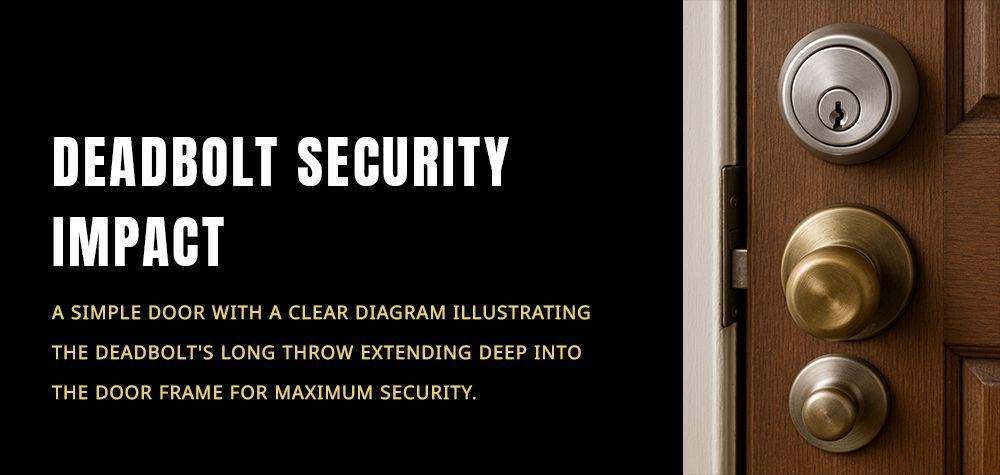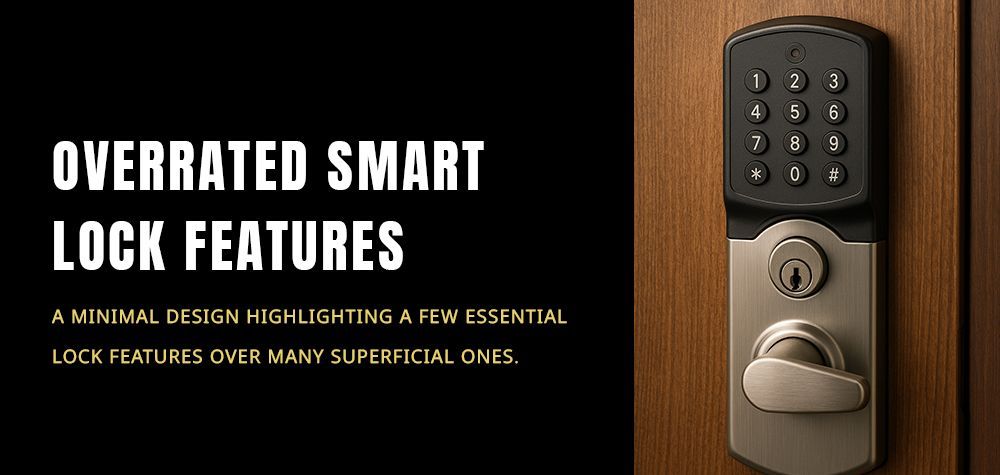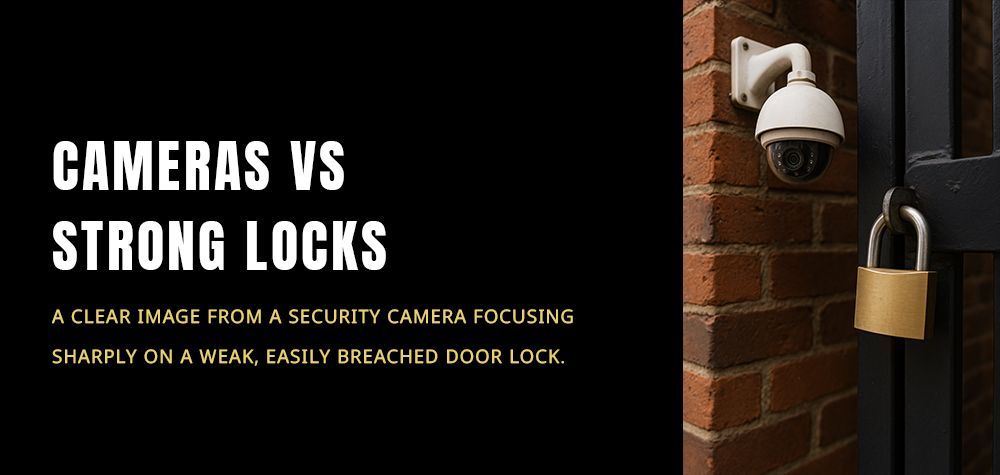Are Chain Locks and Padlocks Still Effective in 2025?
In a world increasingly defined by smart devices, fingerprint scanners, and AI-powered security systems, it’s natural to wonder if the good old chain lock and padlock still have a place. After all, we’re living in 2025—where even our refrigerators are smarter than some of our older security gear. But before you toss out that rusted padlock or snip off your bike chain, it’s worth pausing to consider one important truth: simplicity doesn’t always mean vulnerability.
Yes, technology has changed the way we secure our homes, bikes, lockers, and storage units. But it hasn’t rendered mechanical locks useless. In fact, when used wisely, chain locks and padlocks can still be highly effective tools for protection—especially when integrated with modern safety strategies. In this article, we’ll dive deep into their relevance, how to maximize their strength, common weaknesses, expert recommendations, and preventive tips to make sure you’re getting the best of both old-school and new-age security.
How to Deal with a Jammed Smart Lock
Why Chain Locks and Padlocks Refuse to Go Extinct
Despite all the advancements in security tech, mechanical locks like chains and padlocks have survived for a reason: they’re accessible, versatile, and brutally simple. You don’t need a Wi-Fi connection to use one. There’s no app to update. No battery that dies just when you need it most.
Padlocks still secure everything from backyard sheds to high-end motorcycles, and chain locks remain a staple among cyclists, construction workers, and warehouse managers. Their appeal lies in their flexibility—you can wrap them around gates, doors, fences, grills, or toolboxes. And with dozens of models offering hardened steel, anti-pick mechanisms, and even weatherproof coatings, not all padlocks are created equal.
In areas with unreliable electricity or poor internet connectivity—rural neighborhoods, developing regions, or off-grid properties—mechanical locks remain the first line of defense.
Understanding the Risks: Why Some Padlocks Fail Miserably
Let’s be honest—not every padlock offers solid protection. The market is flooded with cheap, flimsy options that can be popped open with a paperclip or hammered off in seconds. One of the biggest risks with using chain locks and padlocks today isn’t that they’re obsolete—it’s that people often buy the wrong kind.
Weak materials, thin shackles, outdated keyways, and poorly welded chains make for easy targets. Most petty thieves carry bolt cutters or pry bars, and if your lock isn’t up to the task, you might as well not use one at all. That’s why the quality of the lock matters far more than the type.
But here’s the twist: even high-end padlocks can fail if used incorrectly. Wrapping a heavy-duty chain around a thin wooden post or leaving slack in the chain gives thieves more leverage. The security is only as strong as its weakest link—literally.
Modern-Day Threats: How Criminals Adapt to Old-School Locks
One reason people question the effectiveness of chain locks in 2025 is because criminals have gotten smarter. They’ve watched YouTube tutorials. They carry cordless angle grinders, use freezing sprays to make shackles brittle, and employ high-leverage tools to bypass traditional mechanisms.
But that doesn’t mean you’re defenseless. In fact, knowing how these tools work gives you an edge. For instance, many thieves will skip over thick, short-shackle locks because they’re too tough to cut quietly. Some padlocks now come with anti-freeze coatings and double-bolted mechanisms that resist torque.
The trick is staying ahead of the curve—not by throwing away traditional tools, but by upgrading and using them wisely.
How to Maximize the Effectiveness of Chain Locks and Padlocks
Let’s say you’ve invested in a quality lock. That’s step one. But to truly secure your belongings in 2025, placement, positioning, and pairing are everything.
First, always anchor the chain to a solid, immovable object. Avoid aluminum fencing, thin posts, or anything that can be easily cut or unbolted. Wrap the chain tightly with no slack, and try to elevate it off the ground. Why? Because thieves often rely on the ground for leverage while using bolt cutters.
Second, consider dual locking. Use a chain lock and padlock in combination with another deterrent—like a wheel lock for your bike, a motion sensor camera, or a door brace. The more time and effort a thief has to put in, the more likely they are to move on.
Lastly, rotate your lock’s positioning occasionally. Thieves often “case” properties before striking. Changing things up keeps them guessing and disrupts their plans.
Step-by-Step: Choosing the Right Chain Lock or Padlock in 2025
Picking the right lock can feel overwhelming, especially when the market is saturated with options claiming to be “unbreakable.” To help you cut through the noise, here’s a clear, step-by-step guide broken down into what actually matters in today’s world.
Step 1: Start with the Material
The first thing you want to look for is the material of both the padlock and the chain. Cheap, hollow metal or aluminum is a no-go. Instead, look for hardened steel or boron alloy shackles. These materials offer far greater resistance against cutting tools like bolt cutters and angle grinders.
For chains, choose links that are at least 10mm thick. Square-shaped links are preferred because they’re harder to grip and cut compared to round ones. If you're locking a high-value item like a motorcycle or expensive equipment, don't settle for anything less.
Step 2: Check the Locking Mechanism
A good lock isn’t just about the outer shell—it’s about what happens inside. Traditional keyways are easy targets for pick tools, especially if they use outdated pin-tumbler designs. In 2025, opt for disc-detainer or dimple locks, which are significantly harder to pick.
Also, consider a double-bolted locking mechanism, which means the shackle is secured on both sides. This adds an extra layer of protection against forceful attacks.
Step 3: Prioritize Shackle Protection
If a padlock has a long or fully exposed shackle, it becomes an easy target. Thieves love having space to insert bolt cutters. That’s why you should look for closed-shackle or shrouded padlocks. These designs cover or protect the shackle, making it harder for thieves to get leverage.
Closed shackle padlocks might be a little bulkier, but in high-risk areas, they’re worth the extra weight.
Step 4: Don’t Forget Weather Resistance
Locks exposed to the elements are at risk of corrosion, which can weaken them over time and make them harder to operate. If your padlock or chain will be used outdoors—think gates, sheds, or bikes—make sure it's weatherproof.
Look for stainless steel, zinc-plated, or marine-grade finishes. A rusted lock not only looks bad—it’s also more vulnerable to brute force and internal damage.
Step 5: Match Your Lock and Chain
Even the strongest padlock won’t do much if it’s paired with a flimsy chain—and vice versa. Make sure the lock fits snugly through the chain’s end links, without too much play. The tighter the setup, the fewer attack points.
Also, consider the weight and size of your setup. If you’re commuting with it daily (like on a bike), balance durability with portability. A 15-pound chain might offer unbeatable protection, but if you dread carrying it, you might stop using it consistently.
Step 6: Factor in the Environment and Use Case
Where and how you’re using the lock matters. Locking a toolbox in a garage is different from securing a shipping container on a construction site. Take into account foot traffic, visibility, and exposure to environmental factors.
High-crime or low-surveillance areas demand more advanced setups, while low-risk environments can afford more flexible options. If you’re unsure, lean toward overprotection. It’s better to be safe than sorry.
What the Experts Say: Are Chain Locks Still Worth It?
Security professionals and locksmiths largely agree: mechanical locks are far from obsolete. In fact, many recommend layered security, where padlocks and chains serve as the first physical barrier before digital alarms or surveillance take over.
Locksmiths often suggest investing in Grade 3 or higher ANSI-rated locks and ensuring your setup has no obvious flaws (like exposed bolts or poorly secured anchors). Chain locks still play a critical role in mobile security—bikes, trailers, motorcycles, and temporary setups where smart locks aren’t feasible.
And here's the kicker: in power outages, digital hacks, or app failures, mechanical locks still work.
Prevention Over Panic: Simple Tips to Stay One Step Ahead
Security isn’t just about responding to threats—it’s about anticipating them. Check your locks every few weeks for signs of rust or wear. If you’ve moved to a new place, change out any old or suspicious-looking padlocks. Use a UV pen to mark your belongings with your contact info or ID in case they’re stolen and recovered.
If you're securing a high-value item, consider recording your lock setup on your phone. This helps if you forget the placement or need to show evidence in case of theft.
And if you’re truly worried, consult a locksmith for a site assessment. A small consultation can reveal massive blind spots.
So, Are Chain Locks and Padlocks Still Effective in 2025?
Absolutely—if used correctly.
They’re not outdated relics. They’re tools. Tools that still protect millions of homes, bikes, businesses, and storage units every single day. Yes, they can be bypassed—so can every security system. But the key is making it as hard and time-consuming as possible for anyone trying to do harm.
In a world where people are obsessed with going smart, sometimes going smart means knowing when simple still works best. So, whether you're locking your garden gate or securing a trailer on a job site, don't underestimate the strength of steel in your hand.
It’s not about old vs. new. It’s about smart vs. sloppy.
Call Us Any Time!






